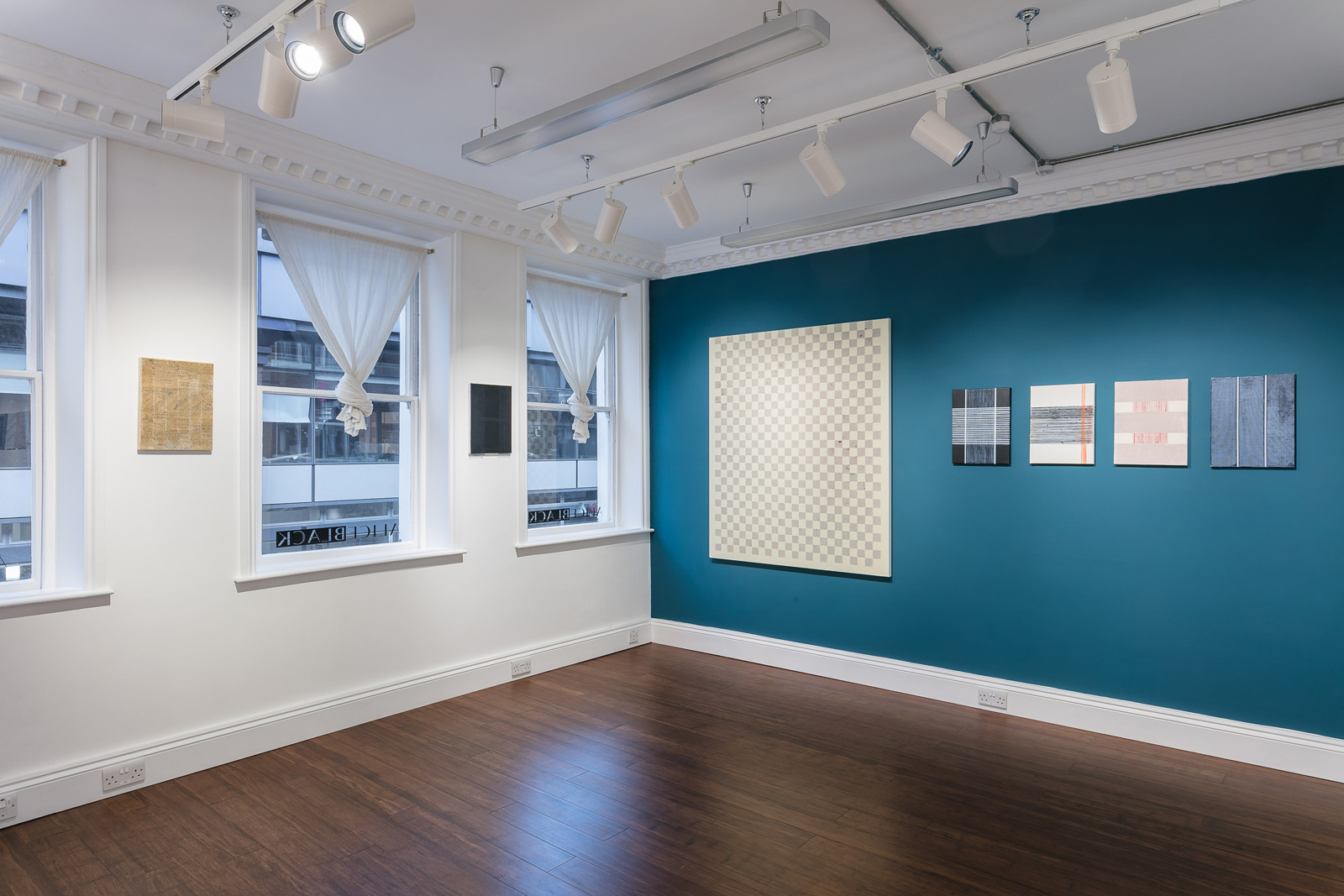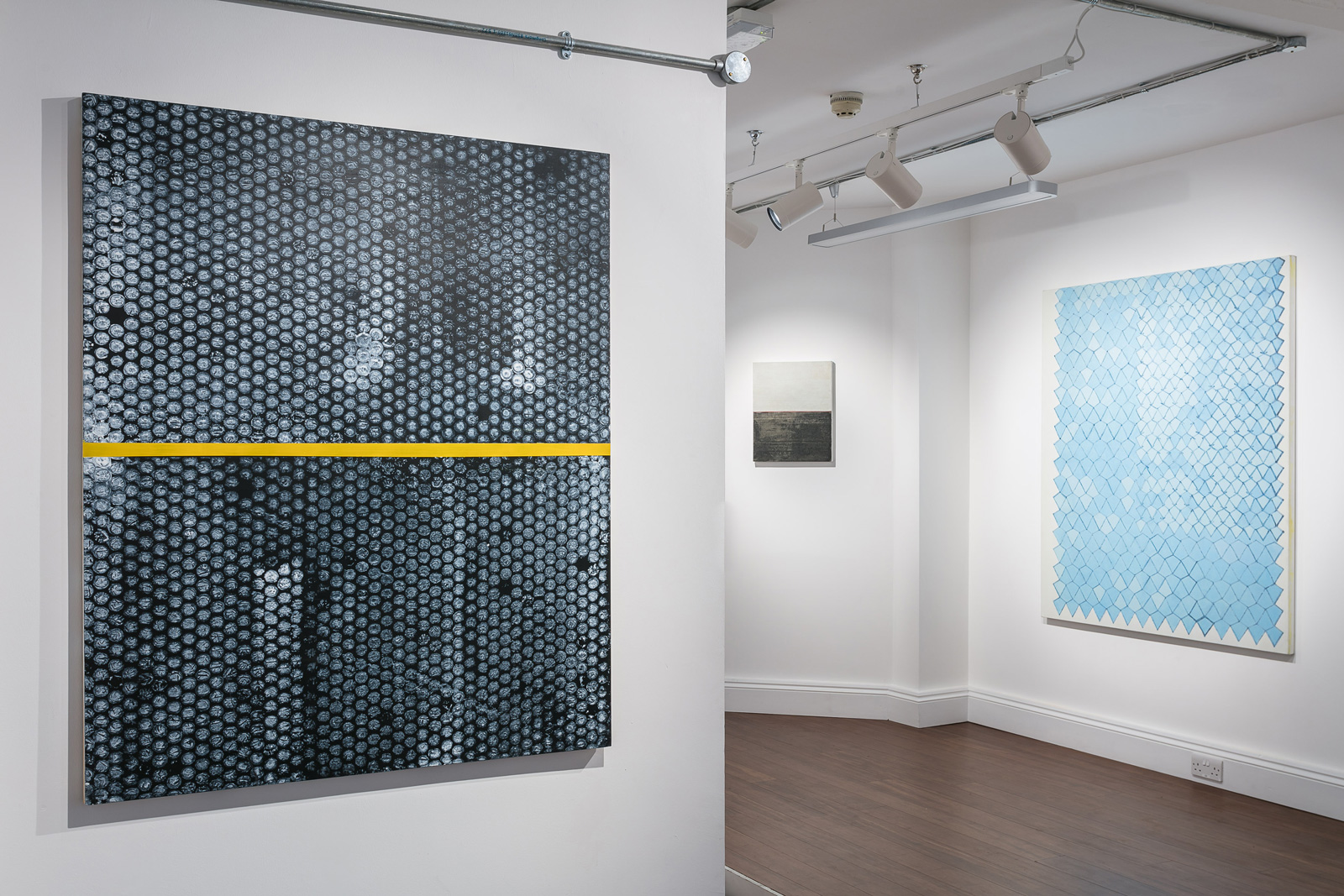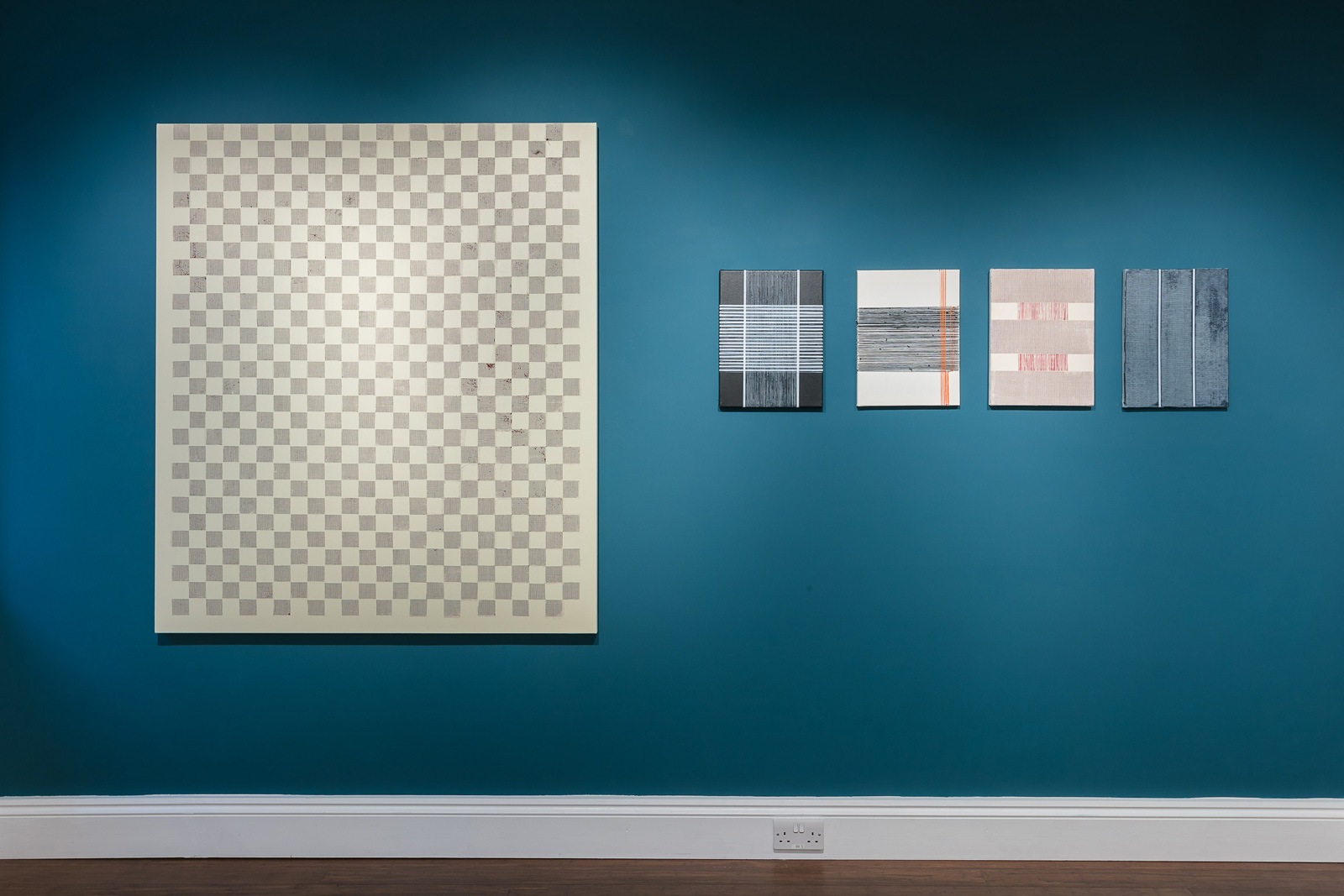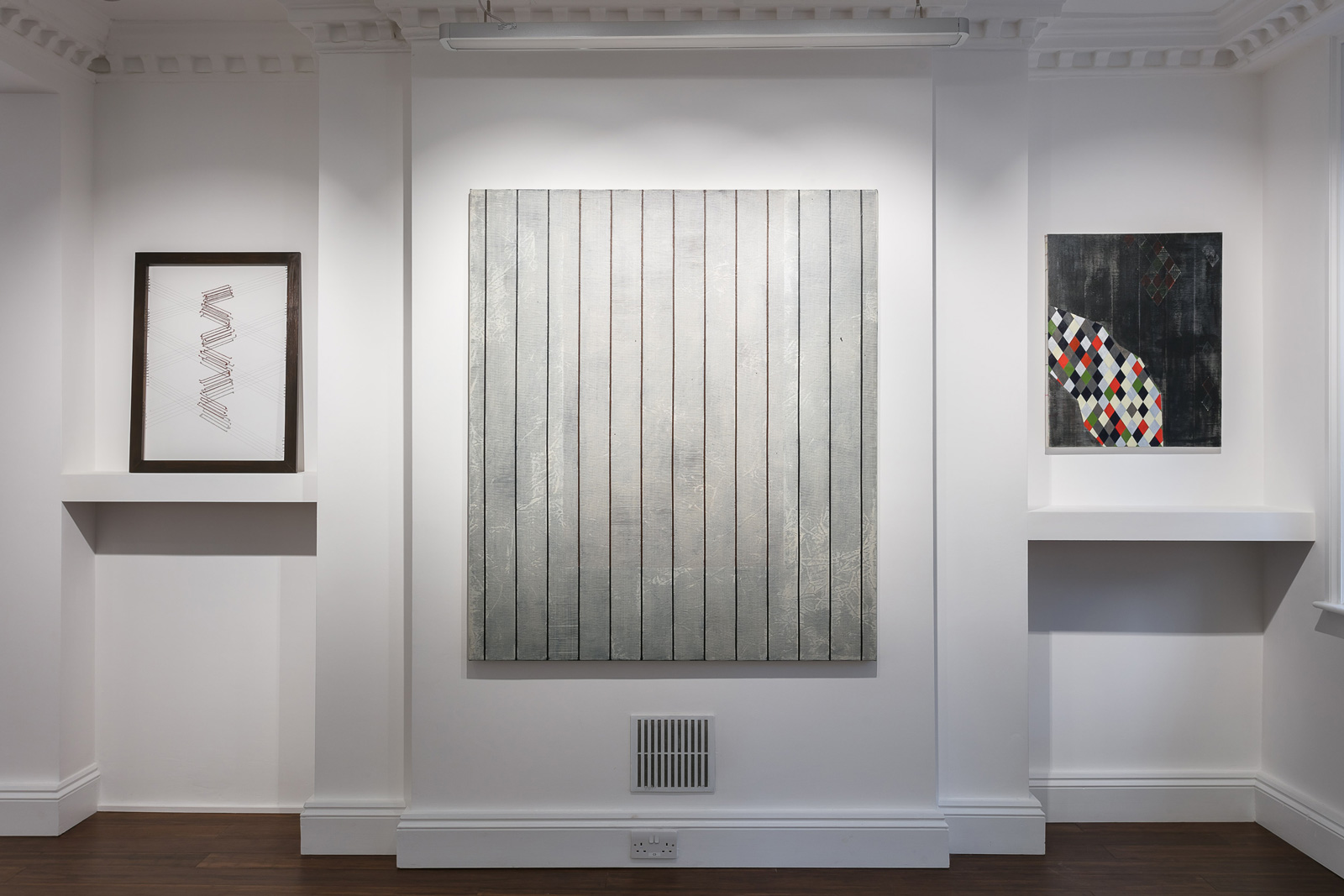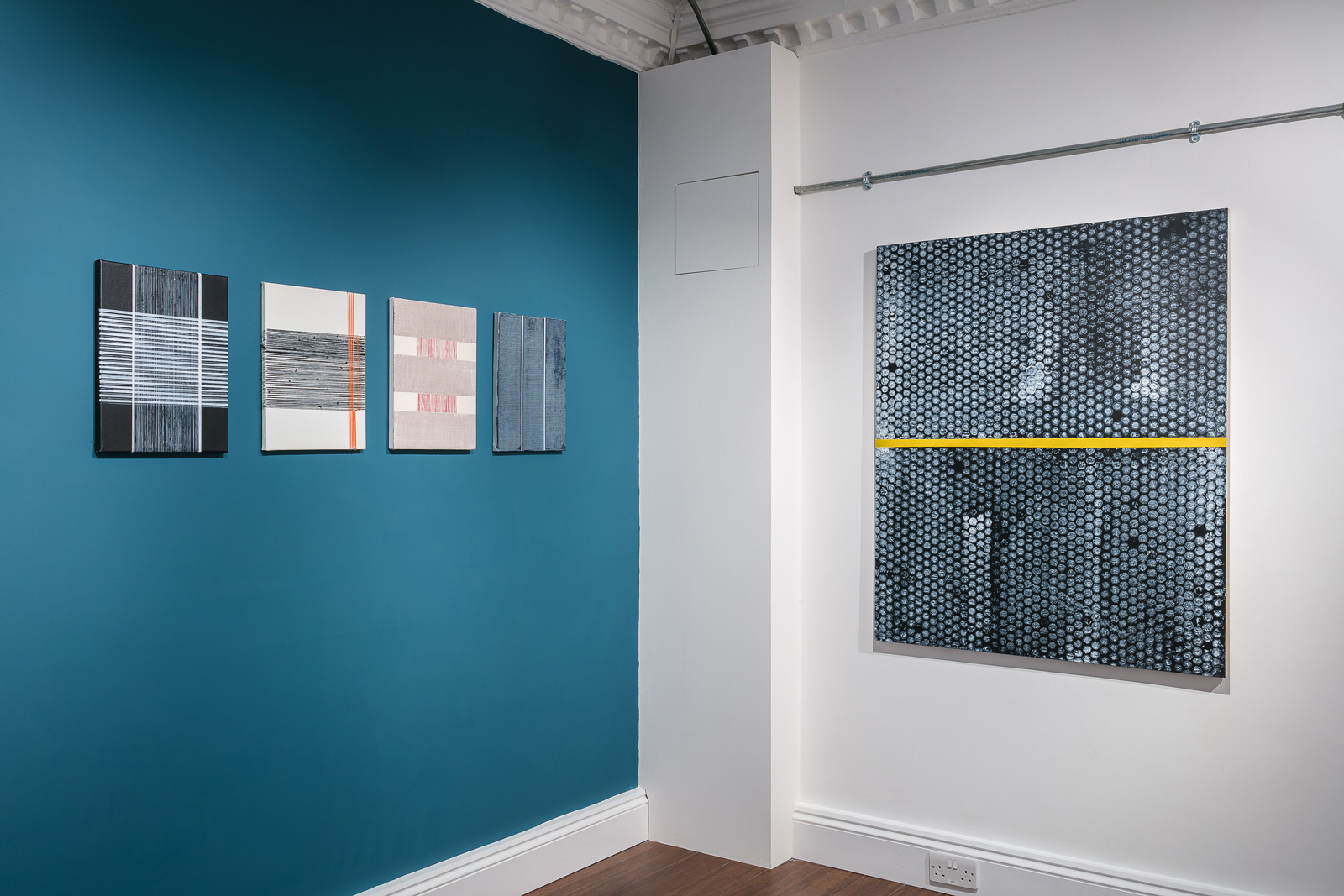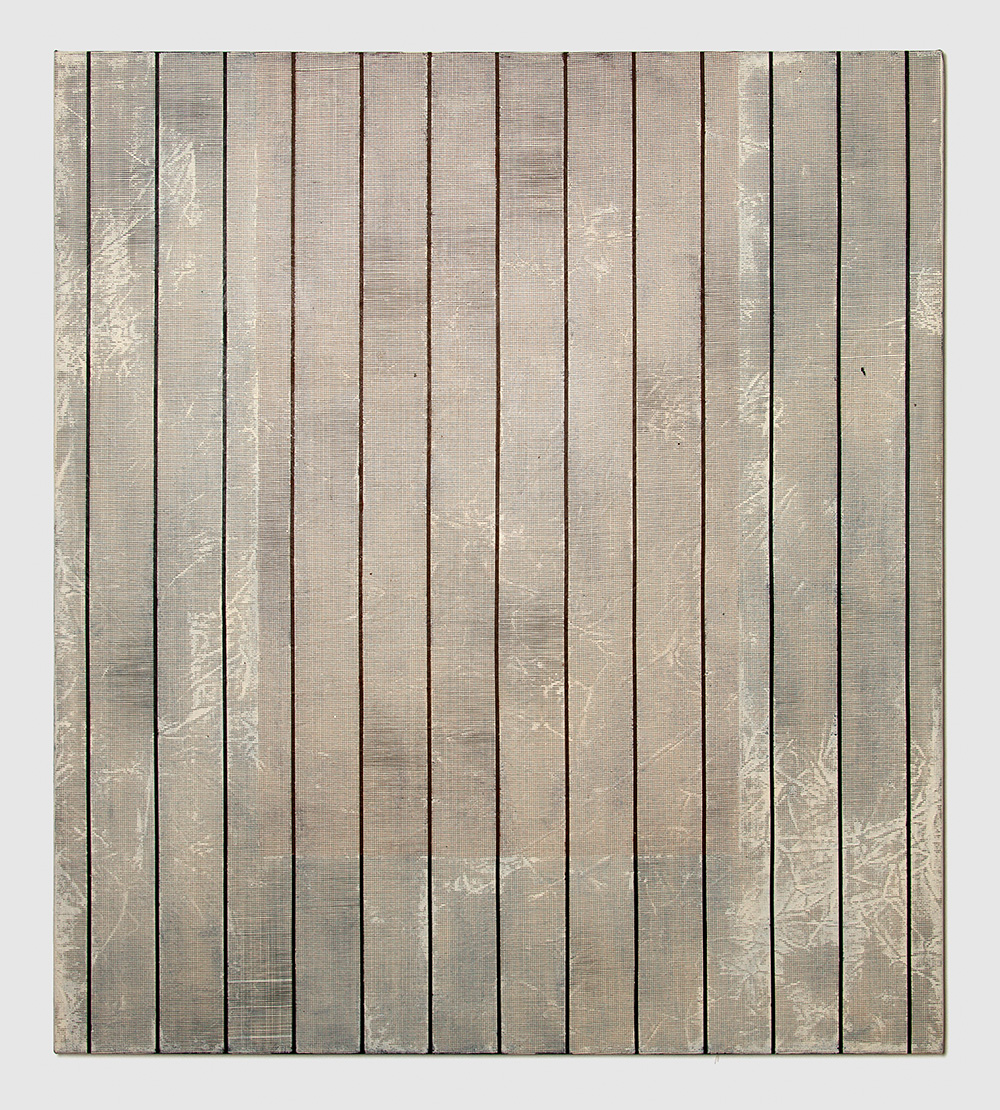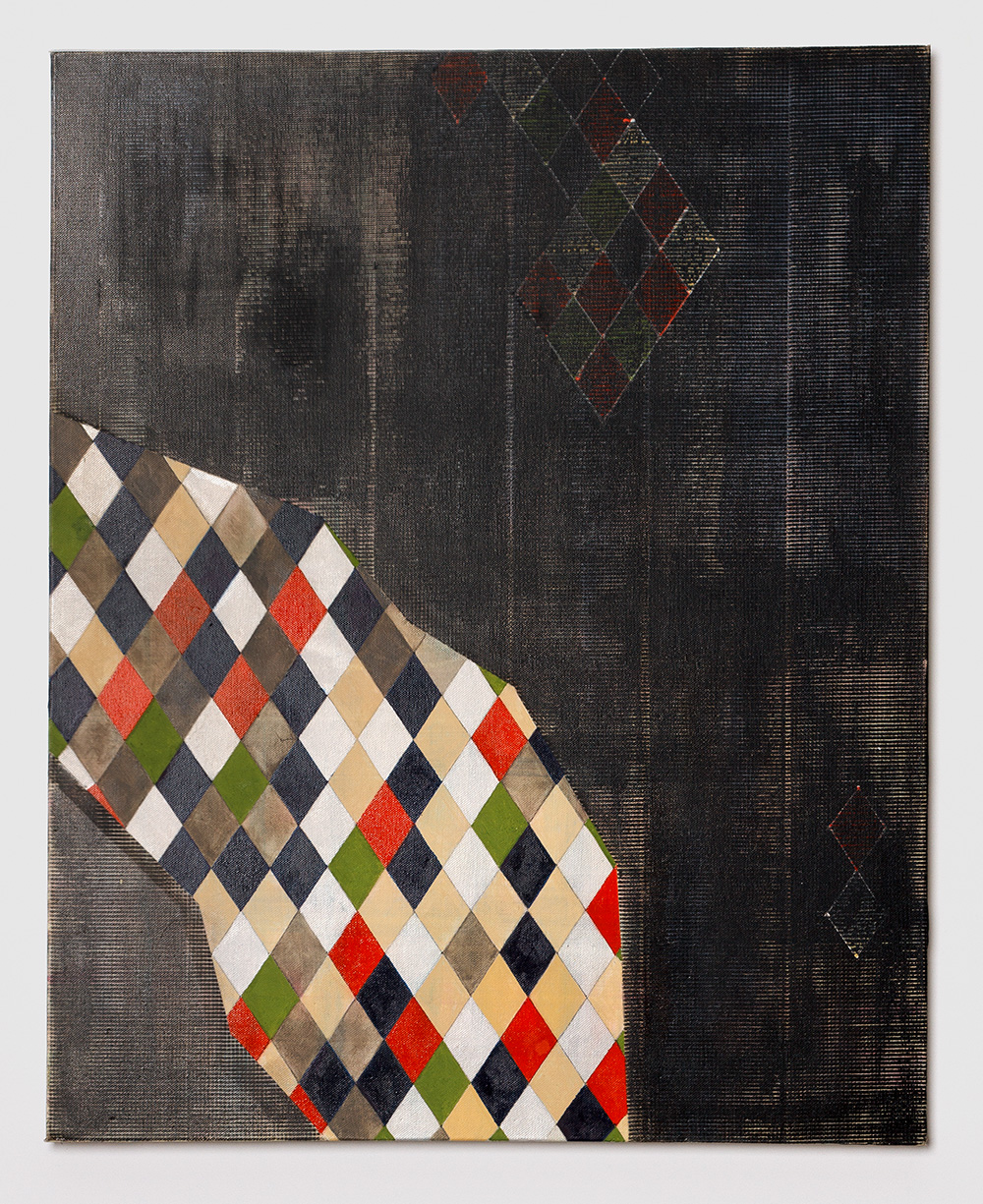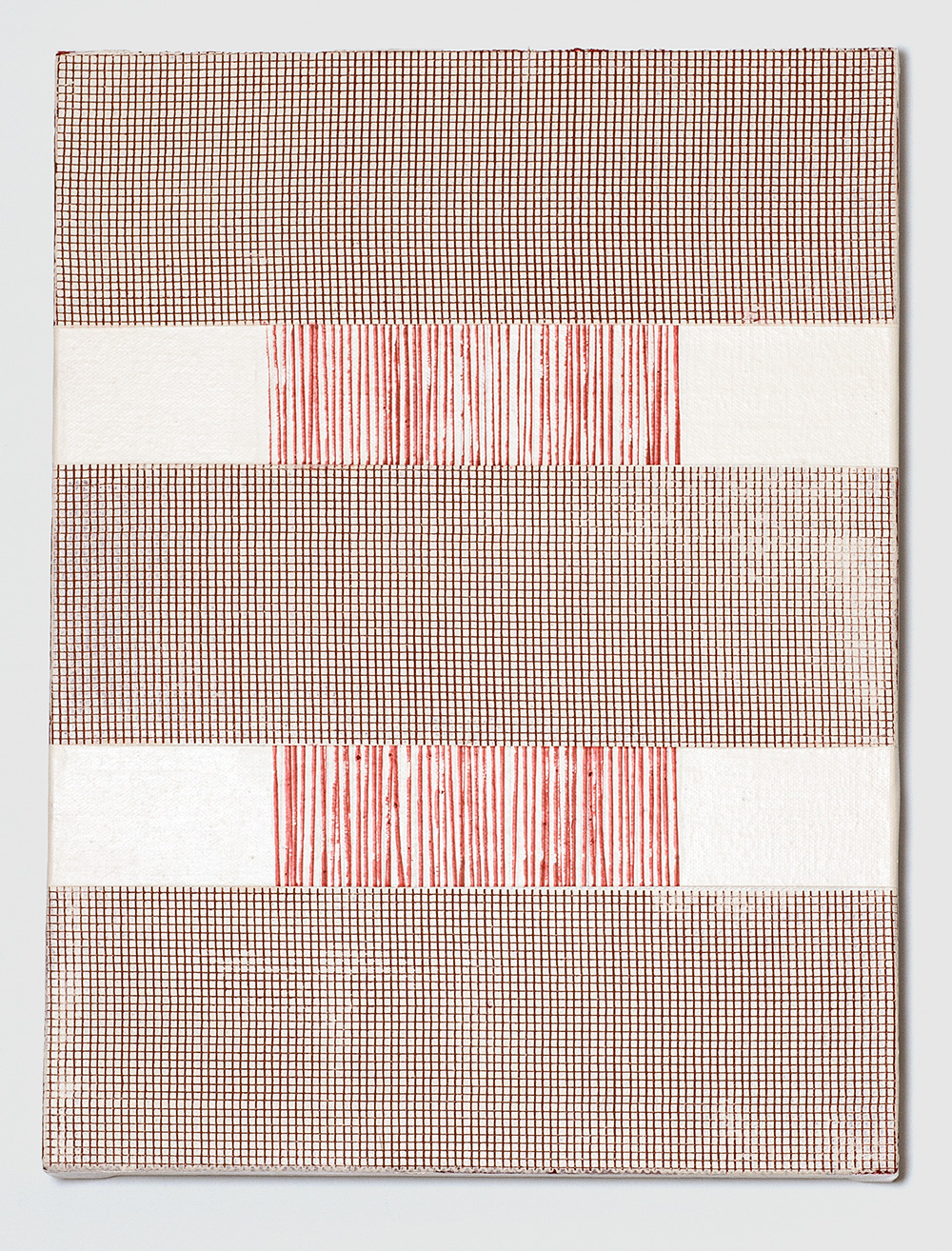ALICE BLACK is delighted to announce gallery representation of, and the first solo show by Karachi born, British artist Adia Wahid (b.1971)
Wahid’s practice spans painting, textiles, drawing and print-making. Through these mediums she investigates the interface between the technological mechanised world with which the human body and mind are faced, and the possible reactions (harmonious or discordant) that arise from this encounter.
Wahid is currently studying for her MA at the Royal College of Art (2016–2018), having completed her BA at Chelsea College of Art and Design (2008–2012) and an Economics Degree at London School of Economics and Political Science (1991–1993).
Wahid’s background in economics stimulated an early interest in the globalisation of technology, with particular regard to the textile industry which employs predominantly women. Initially exploring ideas about the human as machine, the concept of the tool has become instrumental in the development of Wahid’s personal artistic vernacular. Drawing inspiration from the hand, the loom, punch cards and computers algorithms, Wahid’s works often incorporate the weave and web found in both handcrafted and machine produced textiles. A particular interest of Wahid’s is the application of binary numbers in mechanised looms and subsequently in computer coding in the wake of the pioneering technological contribution of Ada Countess of Lovelace (1815–1852).
Drawing further inspiration from musical scores, concrete poetry and architectural blue prints, Wahid’s methodological approach investigates repetitive occurrences through the emergence of patterns and grids generated from her chosen media. Through layering and mimicking of plans or diagrams, new configurations and structures emerge. Directional lines drive themselves vertically, horizontally and diagonally, or are truncated; intersecting and dissecting to form new structures and divisions. Linear disruptions are often at regular intervals forming new yet interdependent areas to comprise the whole: the intention is to create subdivisions that both support and oppose.
Parallels can be drawn between Wahid’s practice and such artists as Anni Albers, Agnes Martin, Eva Hesse, Mira Schendel and Charleyne Von Heyl. Wahid reflects on the progression of abstract painting from Modernism through to Post Modernism and then to the present day. An interest in this historical reflexivity is central to her practice.
Installation views

